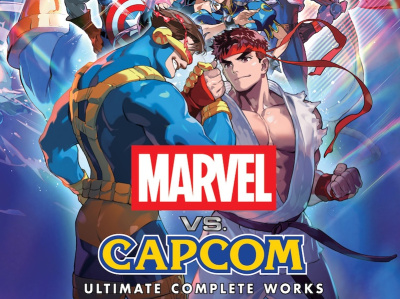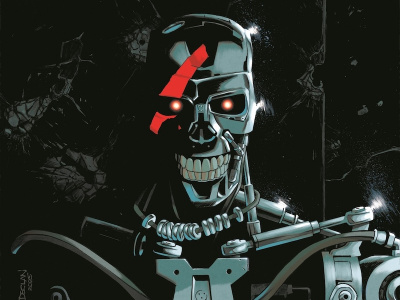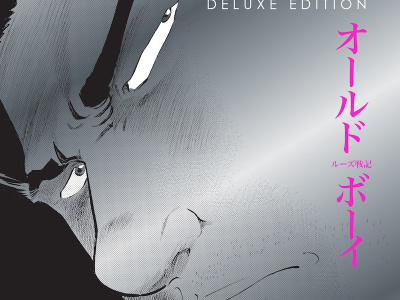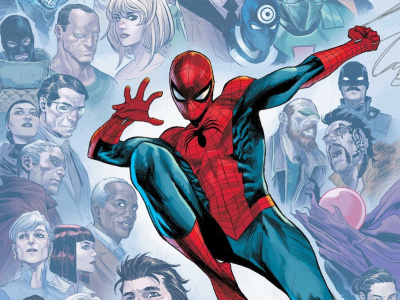
ICv2 caught up with Nick Barrucci, founder and CEO of Dynamite Entertainment and sister company Dynamic Forces to talk about the state of the market and Dynamite’s place in it. In Part 1 of the interview, Barrucci talks about the state of the market in both comic stores and bookstores and Dynamite’s top categories. In Part 2, Barrucci discusses digital trends and the trends in comic collectibles. And in Part 3, Barrucci talks about Dynamite’s editorial plans for 2011.
What’s your perspective on the condition of the comic and graphic novel market?
The periodicals are pretty steady right now. We definitely saw a drop from 2009 to 2010, the second half of 2010 a little bit more so than the first half. I feel like sales are stable today comparatively speaking. The graphic novels have dropped a little bit more though. I think that the more graphic novels that get out there the greater the diminishing returns.
Why do you think periodical sales are down?
Candidly, as an industry we kind of ate our own. We put out too much product and we all increased the prices too quickly. We saw some success with increased prices and took advantage of that [and] unfortunately we’ve pushed away readers. We’ve pushed away casual readers; we’ve cut down on die-hard readers spending money to try new series. I think Marvel and DC have done a great job of trying to turn it around this year. They’re the two leaders of the industry, and if anybody can help save it it’s going to be Marvel and DC. Marvel launching new series at $2.99 and DC holding the line at $2.99 is going to give the industry the best chance possible to survive and to thrive again.
So you really think it’s just the size of the market wasn’t sufficient to support the total volume of books at the prices they were being offered at?
I don’t know if that’s the only thing. I do think that every year consumers have more and more choices for entertainment. And illegal entertainment gets cheaper and cheaper every year on the bit torrent sites--you see what happens with movies, TV and music.
Price and volume are certainly part of what the market can absorb but it’s also content. Do you feel like the last year or two has been strong in terms of content?
I don’t think we put out the best comics that we could have as an industry. I look at myself when I say that as well. Because everyone was releasing more and more comics, I think it’s hard to manage the content as strongly and keep it as focused as you’d like.
I can honestly say, I think with everyone’s lines shrinking it will allow us to focus on content better. I think the content is getting better again.
There’s a lot of activity right now in the book business. You’ve got Borders very shaky and closing a lot of stores. Book stores, until about 2007 or so, were growing steadily in importance to the comics business but now they seem to be slipping back. Why do you think that is and what do you see in the future?
Collections of comic books were able to have lots of shelf space. But if you look at the last five or six years, Marvel really started putting out collections around 2001 with Ultimate Spider-Man and they expanded from there, but they didn’t have the hefty trade paperback program they’ve grown into until about 2003. The more trade paperbacks and hardcovers that publishers put out in any given month, the less attention each one is going to get because the shelf space is finite at Borders and Barnes & Noble; it’s not going to grow.
It’s the same with the comic retailers. The comic retailer has a finite amount of shelf space and a finite amount of open-to-buy dollars, so they’re going to be very selective in the trade paperbacks and hardcovers that they buy. And even with Amazon.com and Borders.com and BarnesandNoble.com being able to carry everything, if a consumer only has $100 to spend on collections, they’re only going to spend $100.
Going back to where I see the market going, I see it just like the periodical market. Everyone is going to have to make harder decisions about which projects become a trade paperback or hardcover collection. I will tell you there are series that we are doing that we are not collecting in trade paperback or hardcover as quickly as we have been. We’re pushing some back because not everything should be a trade paperback or a hardcover. I think that way of thinking needs to go away. If there’s something compelling that you feel that a new audience would be interested in as a trade paperback or hardcover then you do that, or if there’s a strong audience existing, but just doing it to do it should go the way of the dinosaurs as this point.
In regards to Borders and Barnes & Noble, Barnes & Nobles announced that they are suspending dividends and I don’t think that’s a bad thing. I think they’re making sure they keep their cash position strong. And as far as Borders, they’ve been struggling for many years and hopefully going into bankruptcy protection will allow them to come out stronger whether it’s trimming down to 500 stores or even 350 stores. If we get a stronger Borders, we’ll all do better long-term.
In both books and periodicals you talked about bumping up against the limits of the market. One side of that is the production side, how many products are put out; the other side of that is the market size and how many people buy comics, which seems to be smaller than it was a couple of years ago. Why do you think that is?
I can’t answer why the comics market is smaller. I don’t think I have a good answer to that. I just think people are buying less.
At Dynamite you’ve got a lot of different types of product. You’ve got creator owned titles, new material being created on classic intellectual properties like Vampirella and the Kirby material, you’ve got media licensed titles. Can you talk about the categories at Dynamite and which are the most important for you?
Wow, let me pick my favorite children. I think a good balance is what makes Dynamite work. You hit the nail on the head. We have compelling licenses; we work with compelling creators; we find stories and characters that have stood the test of time and we reinvent them or we re-present them and enhance them.
Going down the list, we’ve got The Boys with Garth Ennis and Darick Robertson. On licensed titles, we’ve done a really good job with The Lone Ranger and Zorro--great critical acclaim. Army of Darkness has been one of our longest running titles. On the classics, we’ve enhanced great stories such as Alice in Wonderland. The Complete Alice in Wonderland has been very well received; Complete Dracula, our Sherlock Holmes series, everything we’ve done with The Warlord of Mars. And then we’ve acquired some titles that we’ve re-presented to the market such as Vampirella. To toot our horn a little bit when Vampirella was last coming out from Harris Publications a bit over a year ago, she was selling 2,000 copies, now she’s selling near 16,000 copies.
We work really hard to find these unpolished gems and clean them up and re-present them to the market.
In terms of sales volume, which of the categories are the most important?
It’s what the market dictates. Green Hornet was a license we paid a lot of attention to last year, probably too much attention. Going back to what we were talking about earlier, putting out too much product, we put out too much Green Hornet product. Part of it is that we wanted to get trade paperback collections out in time for the movie, and we did that, we succeeded. We built up our market share and we generated more revenue for us and the retailers. I’m going off on a tangent here, so I apologize, but we took that money and reinvested into projects like Vampirella, like Warlord of Mars, like the upcoming Kirby: Genesis. But we overdid it, and that we realize, which is why you don’t see us doing four Vampirella titles and four Warlord of Mars titles.
Coming back to the question of what is most important to us, Green Hornet was important to us last year and it helped reinforce Dynamite as a company that can capitalize on opportunities. This year our focus is shifting toward Garth Ennis’ Jennifer Blood; it is shifting toward Kirby: Genesis; it is shifting toward Vampirella and Warlord of Mars, but that doesn’t mean that it takes away from titles like The Phantom or The Boys, or The Lone Ranger/Zorro: The Death of Zorro, and the relaunch of The Lone Ranger that we’re going to have. Everything still gets as much attention as possible, but obviously we do bring to the forefront the new titles or titles that can tie into events either inside the comics market or even outside the comics market.
Click here for Part 2.
Click here for Part 2.







